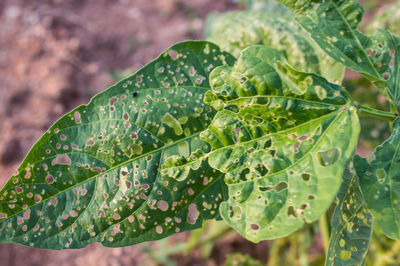The Impact of Climate Change on Plant Diseases with Implications for Food Security and Human Health
- Student
- Melissa Pavloff
- College(s)
- College of Science
- Faculty Advisor
- Jason Rohr
- Class Year
- 2021

Climate change is the shifting of Earth’s climate and weather patterns in response to atmospheric concentrations of greenhouse gases (GHGs), and evidence shows with greater than 95% certainty that current warming trends are largely the result of anthropogenic activity. Environmental phenomena, like climate change, can impact both the virulence of plant pathogens and the resistance of affected hosts. Evaluating and comparing parasite performance across a range of temperatures, precipitation levels, and CO2 levels in parallel with host performance will allow scientists to better evaluate how climate change is affecting and will affect crop disease severity and prevalence. It is also crucial to understand how plants and their pathogens affect each other in response to climate-related stressors. Particular consideration should be given to parasites of plants that provide significant caloric value in the human diet and constitute relatively large portions of the global food supply.
The purpose of this analysis was to predict how pathogen performance might change in future years and the health implications of these changes. It was hypothesized that plants would generally be at greater risk in the future due to increases in plant-pathogen performance as a
result of climate change.
This hypothesis was tested by generating thermal performance curves and testing for significant predictors of pathogen performance temperatures. These models were applied to evaluate predicted changes in pathogen performance under various climate change scenarios in response to different predictor variables. These changes were plotted in density histograms to evaluate overall changes in performance under changing climates.
Comparing predictions to current climate data showed that pathogen performance is likely to increase by 30.13%±0.6946 (p<0.001), 41.24%±0.6946 (p<0.001), 49.965%±0.6947 (p<0.001), and 55.78%±0.6948 (p<0.001) at RCP scenarios of 2.6, 4.5, 7.0, and 8.5, respectively. These levels were lower than those predicted using pre-industrial climate data, indicating that some of the damage has already occurred. These changes in performance suggest that we could face serious threats to our global food supply as climates continue to shift.